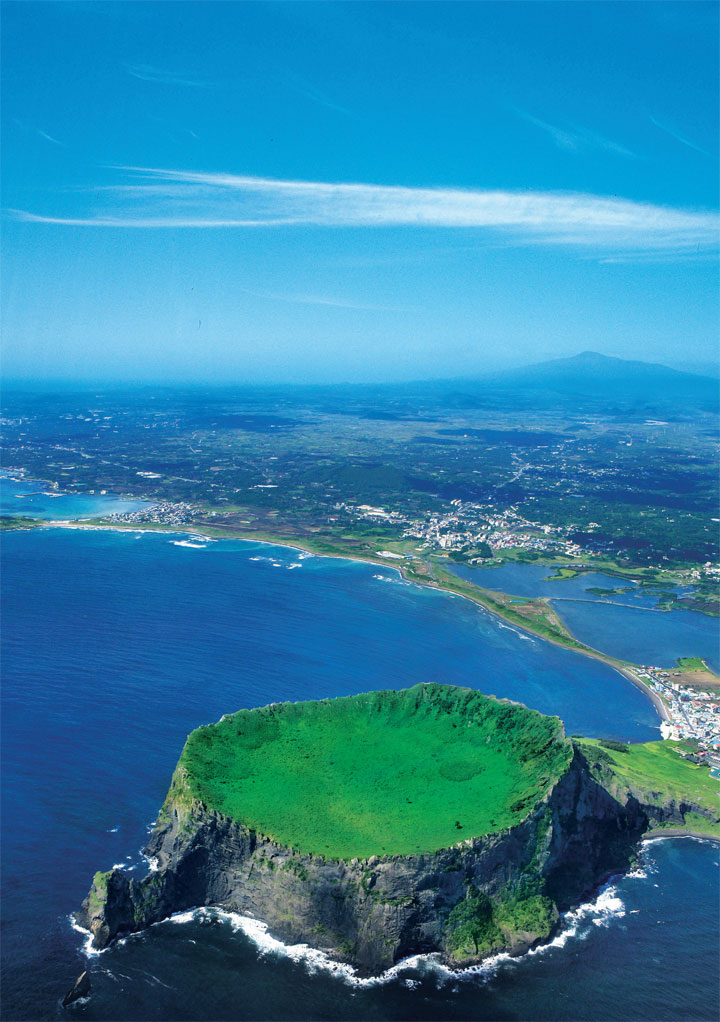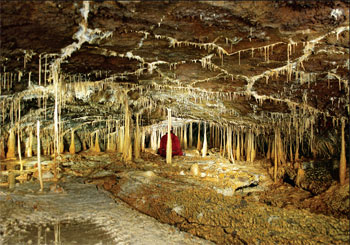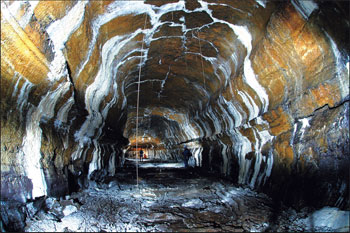 |
Natural Heritage I |
 |
 |
 |
 |
 |
 |

1.Aerial view of Seongsan Ilchulbong Tuff Cone
|
Jeju is a volcanic island formed during the fourth epoch of the Cenozoic Era. With its well-preserved geological features, the island is scientifically valuable for study of volcanic activities and subsequent lava cave formation. In 2007 the UNESCO World Heritage Committee
inscribed the Jeju Volcanic Island and Lava Tubes on the World Natural Heritage List in recognition of their prominent scientific value
and aesthetic scenery. The designation covered
three sites-the Mt. Halla Nature Reserve, the Geomunoreum lava tube system and the Seongsan Ilchulbong, an archetypal tuff cone.
Jeju on the World Heritage List
World Heritage titles are given to sites of outstanding
universal value deserving preservation
and transmission to posterity as defined by the "Convention Concerning the Protection
of World Cultural and Natural Heritage," adopted by the UNESCO at its conference in 1972. World Heritage sites are classified into the three categories of cultural properties, natural
properties and mixed properties. As of June 2007, 183 countries had ratified the convention. South Korea became its 102nd state signatory in 1988 and North Korea the 153rd in 1998.
Natural Heritage sites should have outstanding geological and biological value. Objective and academic judgment is given priority over aesthetic
quality which is more likely to involve subjective assessment. Jeju has some 360 satellite
volcanoes around the main dormant volcano,
Mt. Halla. The island was noted for its extensive system of lava caves regarded as the world's finest and rich habitats for a great
|
 |

2. The "Millennium Lake" in Yongcheon Cave (Natural
Monument)
|

3. No. 3 entrance to Manjang Cave

4. Royal azalea blossom in Mt.Halla
|
 |
variety of rare animals and plants. It satisfied the criteria for inscription to "contain superlative natural phenomena and areas of exceptional natural beauty and aesthetic importance as well as biological and geomorphic value, and the most significant natural habitats for in-site conservation
of biological diversity."
Ecological Haven and Volcano Museum
The World Natural Heritage in Jeju consists of three sites covering a total of 188.4 square kilometers,
including some 187.2 square kilometers of land, which is 10.1 percent of the island' s total
territory, and 1.2 square kilometers of publicly owned water surface. Mt. Halla (Hallasan) has a vast array of plant and animal species and superb natural scenery that features the crater lake Baengnokdam (White Deer Lake) on the top, fantastic cliffs and waterfalls. The mountain,
rising 1,950 meters above sea level, has a unique vertical distribution of plants of diverse zones ranging from the subtropical, warm temperate
and temperate to frigid zones.
The tuff cone of Seongsan Sunrise Peak, created
by undersea volcanic eruption, has a dramatic
landscape. The fortress-like peak, with its walls rising out of the ocean, has exceptional exposures of its structural and sediment characteristics,
including the crater preserving its original shape. It is a world-class location for understanding the process of volcanic formation
and Surtseyan-type eruptions.
The Geomunoreum lava tube system, regarded as the finest of its kind in the world, comprises a lateral volcano and five lava caves. They were created some 100,000-300,000 years ago when magma erupted from Geomunoreum and flowed through natural conduits slanted northeast toward
the coastline, which are now empty caves displaying unique spectacles of multi-colored carbonate roofs and floors. Varying in length, structure and component, the five caves are Bengdwi Cave, Manjang and Gimnyeong Caves, Yongcheon Cave and Dangcheomul Cave. The Geomunoreum lateral volcano is Natural Monument.
|

5. Dangcheomul Cave has spectacular carbonate decorations.

6. The "Millennium Lake" in Yongcheon Cave (Natural Monument)

7. The lava terraces of Yongcheon Cave (Natural Monument)
|
 |
Implications of Inscription
Jeju is expected to experience many changes owing
to the World Heritage designation. First, local
residents' awareness of environmental conservation
will increase along with a heightened sense of self-esteem. The number of domestic and foreign tourists will rise as will the value of its agricultural products, all contributing to international reputation of the island province.
In spite of its blissful natural environment, Jeju has a long way to go before turning its pristine ecological assets and splendid natural scenery into viable tourist resources. Much more debate
and research is needed to draft systematic and sustainable plans to preserve and utilize these assets. Creating on-the-surface exploration
courses and virtual experience venues, developing cultural merchandise and ecological
tourism products, hiking in the vicinities of Geomunoreum lateral volcano, nighttime tourist attractions around Seongsan Sunrise Peak-these are among the ideas for utilizing the heritage sites currently under study to set up practicable plans. Significant effort is being exerted to seek effective disaster prevention and management measures as well.
|
|
 |


